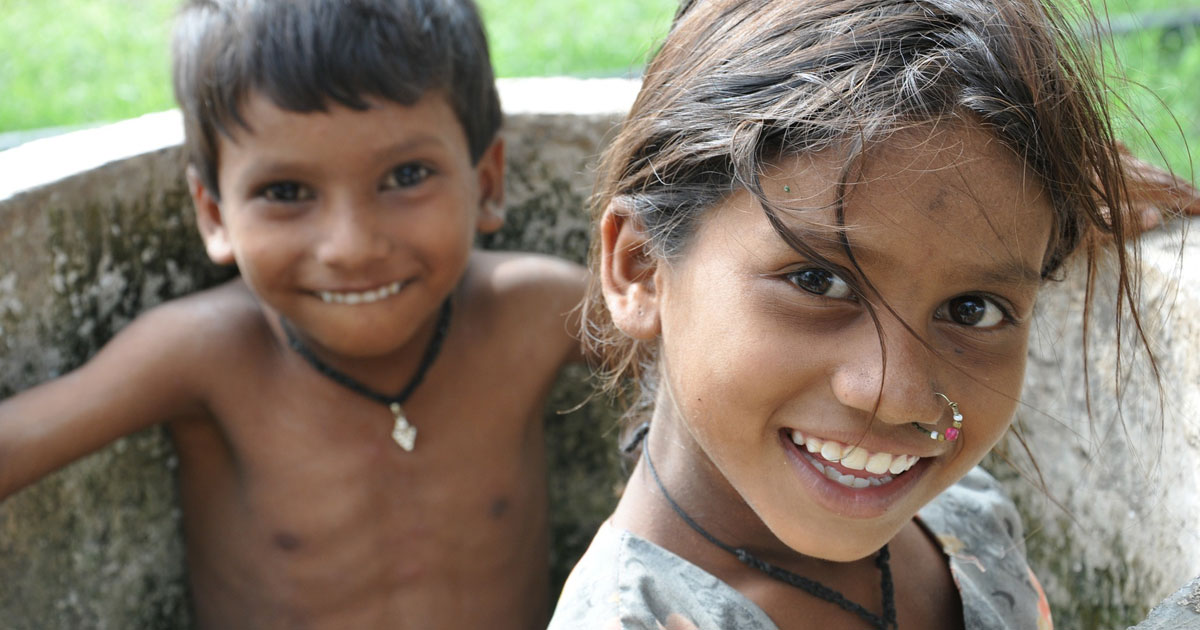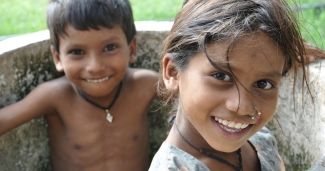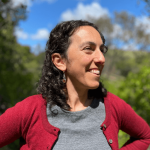Expanded Practice Dental Hygienists: The Tooth Fairy’s Troops for the Underserved

[Editor’s Note: Happy National Tooth Fairy Day! Has your child recently been visited by the tooth fairy? Today, we offer up the tooth fairy’s favorite topic: dental hygiene. This article, first printed in the Summer 2016 issue of MCN’s Streamline, focuses on Expanded Practice Dental Hygienists in Oregon, who serve underserved populations including children from low-income households. For readers in Oregon, they represent the Tooth Fairy’s infantry, setting up in orchards and fields around the state.]
Finding affordable dental care can be challenging for underserved populations in many parts of the country. In Oregon, dental hygienists are confronting the issue head-on. Around the state, dental hygienists are applying for an expanded practice permit, which enables them to perform specific tasks for underserved populations without the supervision of a dentist. Expanded Practice Dental Hygienists (EPDHs) can provide basic dental hygiene exams, periodontal maintenance, adult prophylaxis, fluoride varnish application, and oral health instruction and education.
But there’s a catch. EDPHs are only permitted to work with specified underserved populations, including patients or residents of assisted senior living facilities, state mental health residential programs, community health clinics, and local correctional facilities. They can also serve low-income children and homebound adults. The concept seeks to get dental services to people who otherwise cannot make their way to a traditional dental clinic because of barriers like inability to travel, as in the case with elderly and homebound patients, or lack of paid time off of work, as with many agricultural workers.
Wilber Ramirez-Rodriguez RDH, BSDH, EPDH, serves migratory and seasonal agricultural workers, pregnant women, and children, with Smile Care Everywhere, a program of Pacific University in collaboration with local Federally Qualified Health Center (FQHC) Virginia Garcia and others, to provide EDPH services at rural locations outside of Portland, Oregon. “We go to the places where they work, so they don’t have to miss their work hours,” Ramirez-Rodriguez explained. He and dental hygienist students unload chairs and equipment from their mobile dental van at these rural stops. They also have portable units for their more regular locations. Smile Care Everywhere provides care twice a week, all year long. “We do clinics at the vineyards, at the nurseries, and other [locations] for migrant farmworkers,” Ramirez-Rodriguez said. “If someone needs a referral, we have a partnership with Virginia Garcia,” a FQHC with clinics in agricultural Washington and Yamhill counties, just west of Portland. Patients needing care that EPDHs can’t provide are referred there.
Initially, Ramirez-Rodriguez says that many EPDHs felt restrained in their ability to effectively provide basic dental care, including placing a temporary filling. In response, state law has recently changed to allow EPDHs to establish a collaborative agreement with a dentist if they wish to prescribe anesthetics or anti-inflammatory drugs, or do a temporary filling. Ramirez-Rodriguez, for example, has a collaborative agreement with Virginia Garcia dentists. The changes were meant to empower EPDHs to further address the high levels of dental services needed in low-income communities that lack access to dental care.
Hurdles to providing care
At Pacific University’s School of Dental Hygiene Studies, all dental hygienists graduate the program with specified coursework centering on care for diverse populations and public health, plus 500 hours of supervised dental hygienist work that cover the requirements to be eligible to apply for the EPP through an accredited program. Alternatively, already-practicing dental hygienists may apply for the EPP after working or volunteering under the supervision of an EPDH or dentist for 2500 hours, in addition to completing 40 hours of coursework on dental hygiene and/or public health. After obtaining the EPP, many newly licensed EPDHs will go on to set up their own practices; however, the hurdles can be challenging to overcome. As EPDHs work independently, they may miss the opportunity of mentorship from dentists and others in the dental community. The increase in privileges referenced earlier can be impossible to secure for EPDHs who don’t have established relationships with dentists, or who can’t find a dentist who will support them, Ramirez-Rodriguez says. Isolation is one of several barriers that EPDHs face in the field -- the largest being financial.
Reimbursement is a severe hurdle that some newly permitted EPDHs never manage to overcome. Dental hygienists are not recognized as regular providers by many dental insurances, which can result in very low overall wages, says Kristen Thomas, RDH, EPDH, BSDH, a faculty member at the Pacific University’s School of Dental Hygiene Studies. “Many of these students have student loans, and not being reimbursed, or being reimbursed at a lower rate, is very challenging,” Thomas states. EPDHs often move on to local practices serving the underserved like Virginia Garcia or the Memorial Health Clinics in the region in hopes of making a living wage, or go to larger group practices or private practices for better salaries.
Additionally, EPDHs may be weighed down with start-up costs to purchase equipment. EPDHs choose how they provide services, which can vary, depending on their practice goals and scope of service. Some choose a fully-loaded mobile dental van with an in-van chair. Others, like Ramirez-Rodriguez, use a van with portable equipment where the EPDH has to load and unload at each stop, and wherein the EPDH needs a secondary location for sterilization and repair. A EPDH may just have some basic tools and basic sterilization equipment at their home, providing very limited services but with less start-up expense. Regardless of the set-up, start-up costs are another factor that limits EPDHs from establishing their practices quickly after receiving their permit.
A final and equally serious financial challenge for EPDHs is paying for sufficient liability insurance. Ramirez-Rodriguez counts himself lucky that he is covered by Virginia Garcia’s liability insurance because of Smile Care Everywhere’s partnership with the FQHC.
Concerns with EPDH care
But the program is not without concerns. Many are skeptical that hygienists receive sufficient training to provide the same quality of care that patients would receive from a dentist. Others have expressed concern over hygienists working in the field without a dentist’s direct oversight or without the full suite of dental equipment; EPDH patients may opt not to seek further dental care in a traditional dentist’s office, giving up the chance for dentists to diagnose dental concerns that a mobile EPDH with limited equipment might miss.
Thomas reframes these concerns. She says there are very few dentists that accept Care Oregon, the nonprofit health plan serving Oregonians who are eligible for Medicare or Medicaid. She explains that the reimbursement is low, and many dentists opt not to serve those patients, leaving them without care. “The need is not being met,” Thomas stated. EPDHs, she says, are the ones willing to meet the need. “There’s a big population in the US that is not being taken care of, in the dental field, because their income level is so [low] that they can’t afford to go to the dentist,” Ramirez-Rodriguez said. At his clinics, he says he sees patients who have had abscesses in their mouths for 20 years. “Can you imagine living with a wound in your mouth for that long?”
Alternative dental programs
Other models to meet the needs of lower income and underserved patients include teledentistry, in which dentists can guide hygienists remotely, or an alternative dental care professional like the newly created dental therapist. “It’s a midlevel provider, like a PA or FNP, who can work independently and do work that the dentist typically does like extractions, simple fillings, simple root canals, but for special populations,” Ramirez-Rodriguez said. In Oregon, a dental therapist pilot program is in the works at health centers serving Native American tribes, to expand dental care to Native Americans. Ramirez-Rodriguez seems particularly intrigued with the dental therapist expansion: “When we are at a clinic, 70 to 80 percent of our patients have decay. As a hygienist, we are able to treat decay in an early stage, before it develops… but [in many ways] I’m tied.” With a dental therapist at the helm, he says, more extensive work can be done for populations that may otherwise never be able to get the work done.
Similar programs are gaining speed elsewhere as well. A long-running EPDH program in Alaska swaps students occasionally with programs in Oregon. Michigan, California, and Texas have midlevel practitioner programs at various stages of development. Meanwhile, the EPDHs from Pacific University keep plugging along. Last year, Smile Care Everywhere saw 395 patients, providing $185,886 worth of dental services. Most of the patients were Spanish speaking, and came from households making less than $20,000 per year. As Thomas noted, when it comes to EPDHs, “the desire is there, the passion is there, the ability is there.” For underserved populations like migrant agricultural workers, the need is also clearly there. Oregon’s EDPH program takes important first steps toward meeting the long-standing dental needs of underserved populations.
Read the entire Summer 2016 issue on our Streamline webpage.
Like what you see? Amplify our collective voice with a contribution.
Got some good news to share? Send it to us via email, on Facebook, or on Twitter.
Return to the main blog page or sign up for blog updates here.
Can you help prevent a death? Tomorrow’s Webinar: Community Health Workers Can Make a Difference in Helping People Stay Safe and Healthy on the Job
[Editor’s Note: Learn more about tomorrow’s webinar and all our upcoming webinars on our Upcoming Webinar webpage.]
Two weeks ago, the Occupational Safety and Health Administration (OSHA) issued a citation against Woda Construction for failing to prevent the death of worker Kevin Purpura, who fell several stories down an elevator shaft. OSHA determined that the company had failed to guard its worker against a fatal fall. This death was not an accident. Had Woda Construction and its workers adhered to the safety regulations, Purpura would have been protected from falling by the required “personal fall arrest systems, covers, or guardrail systems erected around such holes.”
In 2014, around 5,000 people died on the job, and another 50,000 died of occupational diseases. Were these deaths “accidents”? In many cases, occupational injuries and deaths occur when health and safety guidelines have not been followed.
Much of the work needs to be done at the jobsite. But we in the health community can prevent injury and death as well. MCN’s Amy Liebman, MPA, MA, Director of Environmental and Occupational Health, joins Wilson Augustave, member of MCN’s Board of Directors and Senior HIV Case Manager at Finger Lakes Community Health in tomorrow’s webinar, entitled, “Community Health Workers Can Make a Difference in Helping People Stay Safe and Healthy on the Job.” Participants will dive into the role of CHWs in empowering workers to know their rights. Liebman and Augustave will also cover what to do when we find out that a patient is working in an unsafe work environment, by covering federal and local regulatory bodies that protect workers on the job. Participants will come away with resources and knowledge to help prevent future deaths.
Join us:
Community Health Workers Can Make a Difference in Helping People Stay Safe and Healthy on the Job
Presented by Amy Liebman, MPA, MA, Director of Environmental and Occupational Health, Migrant Clinicians Network, and Wilson Augustave, Member of MCN’s Board of Directors and Senior HIV Case Manager at Finger Lakes Community Health
Wednesday, August 17, 2016 at 1 pm ET
Learn more and register on our Upcoming Webinars webpage.
- Log in to post comments

